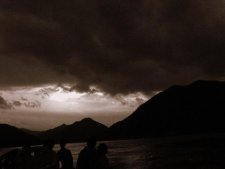By Kiril Ristovski (Posted: January 13, 2009)
In the last period one of the cases which was subject of research in Macedonia was the case of the big polluter Refinery OKTA. One of the recommendations of the TAI report related to the legal legislator was the change in the Environmental law Article 212 i.e. increasing the minimal fines to 100 000 euros for the legal and natural persons who cause pollution or harm the environment.
The changes in the environmental regulations should be credited to the citizens. In Skopje massive strikes and blocades were organized for more than ten days. We at Florozon reacted heavily in the media and by influencing the media managed to influence the central government. What is important is that we call on our work i.e. the conducted research in the case of OKTA. Florozon lit the fire against the polluters when we published several TAI stories in the daily newspaper Dnevnik. In December, our organization carried out events, TV programs, and interviews in order to change things for better.
The first recommendation in the TAI Report in Macedonia has been implemented. Massive protests organized by the local inhabitants and Florozon’s lobbying influence brought the issue media attention. Through increased media attention and meetings with the government on the basis of the data from the TAI Research changes were achieved in the legal environmental regulation.
On 19th December the changes were implemented in the Environmental law. In the Environmental law in Article 212 bullet 1 the amount from 8000 -10 000 euros was changed with the amount from 70 000 100 000 euros. Also, the Government obliged to set up several stations for measurements in order to measure the pollution coming from Refinery OKTA.
We are pleased with this decision and the improvement that was made concerning the Environment in Macedonia.





